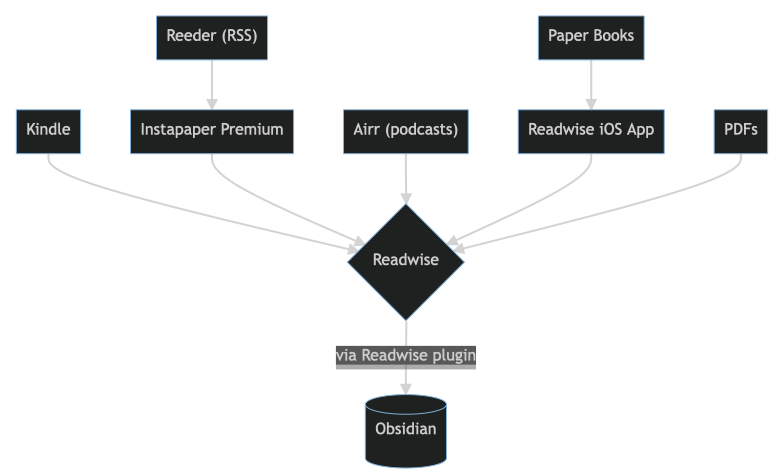It is “Arschkalt”. Loving the silence of the early morning.
DailyDogo 107 🐶

The Early Riser Day 36 🎙🌅
Power naps are magic.
DailyDogo 106 🐶

Finished reading: Four Thousand Weeks by Oliver Burkeman 📚 -> My thoughts: Impermanence And Improvement
Impermanence And Improvement
Four thousand weeks by Oliver Burkeman is a book about admitting and embracing the finitude of the human experience. It is a reminder that your life will end and that you can’t do everything you want. It is a self-help book that tries to take a realistic look at the obstacles that productivity tries to overcome and admit: It’s impossible.
If this sounds negative, it only is negative, if you believe that life is somehow infinite. That with enough productivity tricks you will find a way to overcome the fact that there isn’t enough time, energy or opportunity to do it all. If you truly embrace this hard limit - that you can’t do it all and that you too will die and rather soon as well - it frees you to do the best you can in each moment and you won’t perpetually live in a way that tries to make a fantastical future a reality that will never come.
I thought it expressed succinctly one of my core beliefs: I have to play the hand that I was dealt and resources (and everything is a resource) are not available in endless supply. If you take these two things together, it makes sense to go for a satisficist way of life.
The book also uncovered a very important puzzle piece for me, which is that my here and now is not merely a transitory state in between the lacking status quo and an amazing future. Instead of improving things in the present moment, I would endure certain things simply because I defined my present situation as something that didn’t matter in the future.
It’s an interesting fallacy to fall into, because if you are interested in meditation (like I am), you probably have heard of the idea of impermanence, that everything is constantly changing and getting attached to impermanent things will create suffering. But living fully in the limited moments our lives have to offer also means to not simply ignore the potential the present moment holds. As long as we are open to things changing and we are not clinging to a state of affairs as if it would be permanent, then improving stuff, for now, for the joy of it, for as long as it lasts, is a good thing. In other words: There is no need to let it be.
My Current Highlighting And Annotation Setup
Currently my highlighting and annotation setup looks like this:

- Ebooks: Kindle - Even though Amazon as a company is not without its problems, their ebook reader just works and highlighting and annotating for ebooks works with Readwise flawlessly and without friction.1
- RSS and misc. articles: Reeder and Instapaper Premium - I recently tried out Feedbin and Inoreader, but the most versatile “read an article on the web and annotate it” setup is this: Send articles from your feed reader (and anywhere else) to Instapaper and annotate them there.2
- Podcasts: Airr - I don’t think, that I will ever switch my main podcatcher from Overcast to Airr, but if I have the need to capture a part of a podcast, I can open the episode I would like to annotate and create a note that is available in Readwise through this app.
- Paper books: Readwise iOS app - I’ll have to wait and see how much of a hassle this will end up being, but in theory I could capture highlights from paper books through the iOS app. I would need to take a photo of a page and after text recognition I can highlight what I would like to keep. I have not read a paper book since I have started using Readwise, though.
- PDFs: Readwise Web App - This is one of those someday/maybe list items. It’s possible in theory to import highlights from PDFs via uploading those files and it is something I would like to have done, but not something I want to do. Most of my studying time I annotated PDFs digitally and most of those PDFs are still living in my Zotero-library.
Why even have a setup like this? Because Readwise is actually awesome. I was skeptical at first, but after reviewing highlights for about two weeks now, I can honestly say: The added engagement with my previously read stuff helps to keep me reading.3
The real kicker is something else, though: Readwise offers an official Obsidian - the note taking software - plugin that syncs my highlights to my own markdown file based knowledge base. So even if I decide to stop using Readwise, the highlights and notes will still be there, in an open and somewhat future-proof format.
-
And I own the 6th generation Kindle Paperwhite (from 2014) already. Throwing it away doesn’t seem to be smart. As long as it works, this works. … While writing this I looked into e-reader alternatives, but it seems that the Kindle is the most convenient choice for a consumer with my needs. ↩︎
-
Instapaper Premium is needed for the annotations (since you only get 5 per month on the free tier). Premium includes some other features like text-to-speech and speed reading, but I don’t really use these features. ↩︎
-
And writing. Which is one of the goals of this year. There is more to say about this, when framed more theoretically, but this is not the post for this. ↩︎
The Early Riser Day 35 🎙🌅
No content really today. Sorry about that.
PuppyCast 14 🐶🎙
Puppy school troubles.
DailyDogo 105 🐶

The Early Riser Day 34 🎙🌅
Waking up late.
DailyDogo 104 🐶

The Early Riser Day 33 🎙🌅
Puppy school part 2.
DailyDogo 103 🐶

The Early Riser Day 32 🎙🌅
Describing the surroundings.
DailyDogo 102 🐶

The Early Riser Day 31 🎙🌅
Coming up with topics.
DailyDogo 101 🐶

The Early Riser Day 30(!) 🎙🌅
Waking up before the alarm. Bargaining with yourself.
DailyDogo 100(!) 🐶

The Early Riser Day 29 🎙🌅
Keeping the loved ones in mind.
DailyDogo 99 🐶

The Early Riser Day 28 🎙🌅
Back at home. Being proud of having made it this far.
PuppyCast 13 🐶🎙
Puppy school: First lesson. Some negatives but also some positives.
DailyDogo 98 🐶
